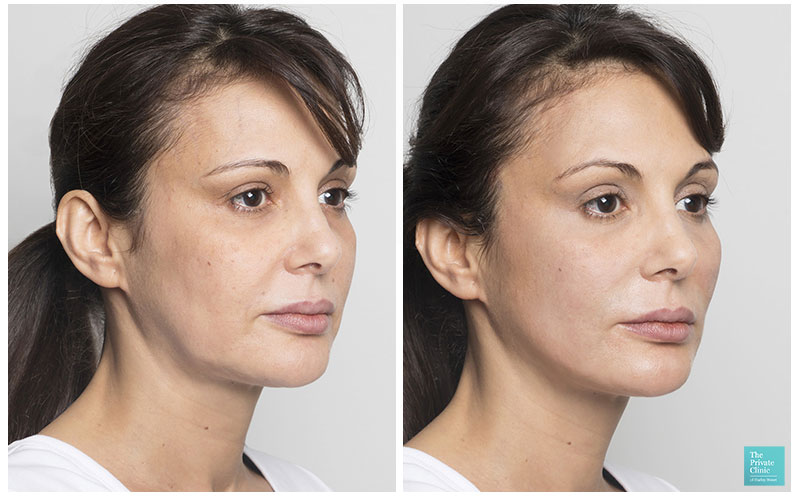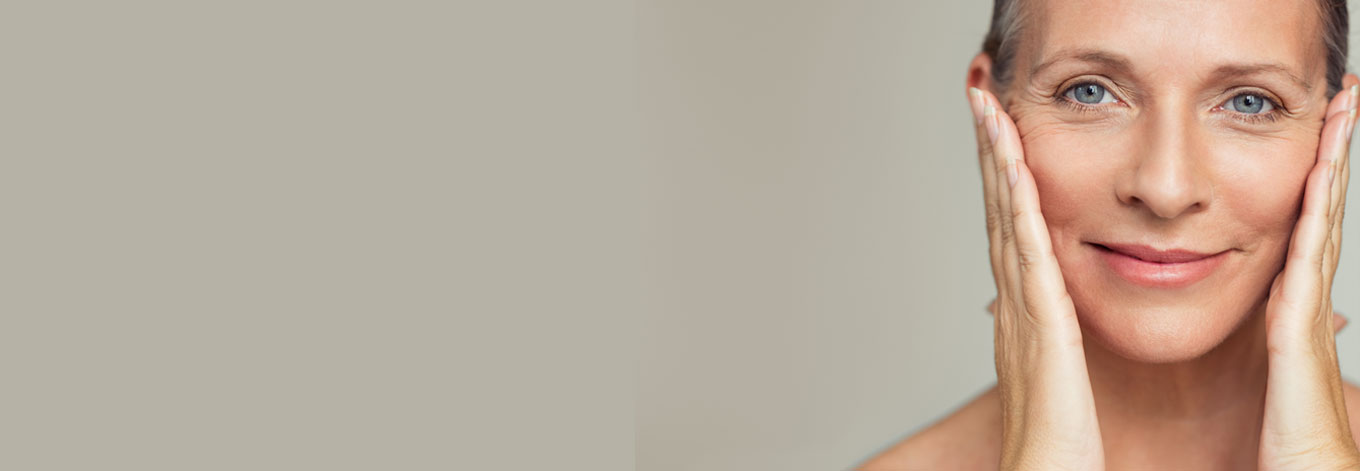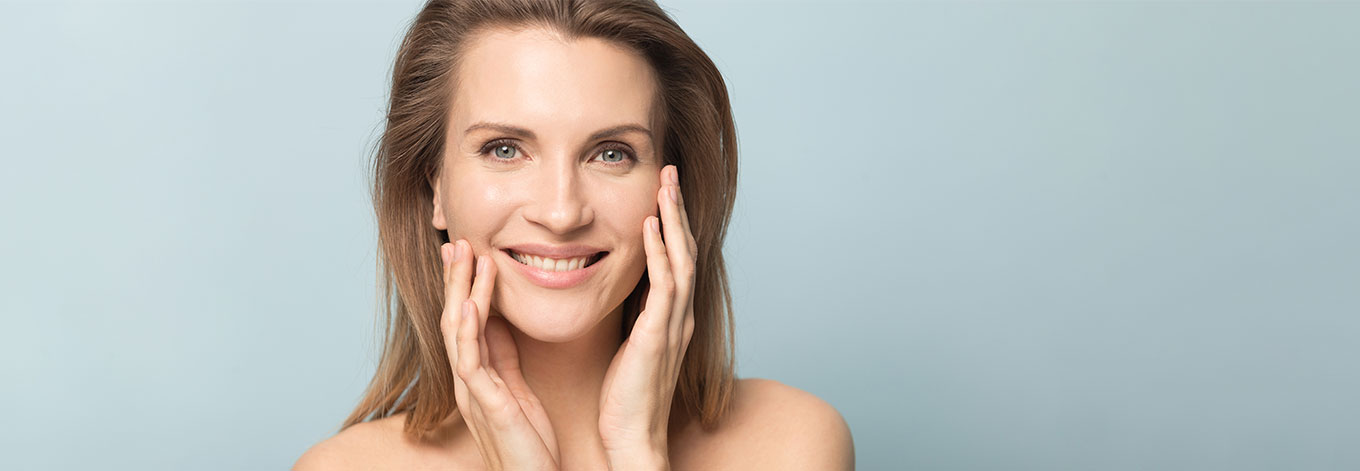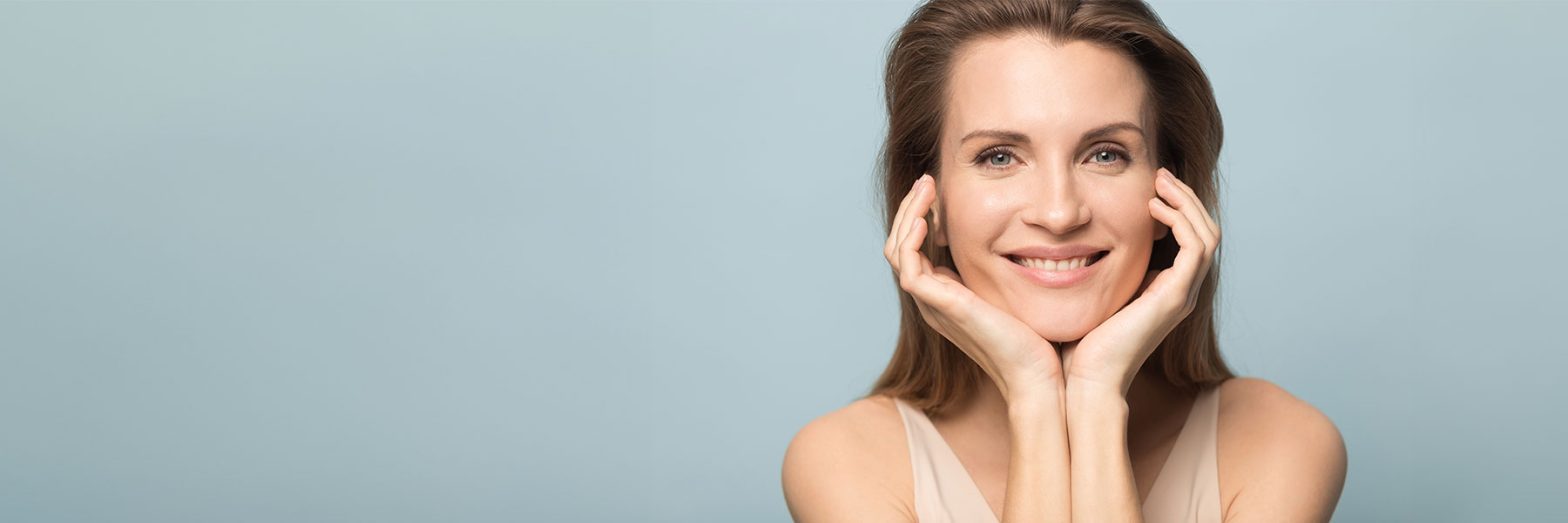
What are Sagging Jowls?
What are jowls?
When we say jowls, we are referring to the skin along the lower jaw; if the skin is sagging below the jawline then you have what is known as sagging jowls.

Who gets sagging jowls?
Anyone can develop sagging jowls; they have the tendency to affect women more than men and often start to appear in their 40s. Those who have a narrow face have been known to get them quicker than those with a fuller face.
What causes sagging jowls?
- Natural ageing: ageing unfortunately is the main cause of sagging jowls which means there is not always a lot we can do to prevent it. As we age, our skin starts to loose elastin and collagen which is the key to keeping your skin smooth, firm and taut. As a result of losing collagen and elastin the opposite effect occurs and skin begins to give into gravity so the lower fat of the cheek moves downwards resulting in jowls.
- Genetics: some of us are destined to develop jowls thanks to our genetic predisposition. In these cases, jowls may appear earlier in your life.
- Weight: when you gain weight, the skin on your face, as well as on other areas of your body, stretches to accommodate the extra fat. So when you lose weight it may leave you with an area of loose skin, can result in jowls appearing.
- Lifestyle: your lifestyle can play a part in the ageing of your skin. If you work on a computer a lot then the way you are sitting and how you are looking at the screen can affect your skins ageing. A number of professionals are being diagnosed with ‘computer face’ which is when jowls become more apparent if you are sitting in one position and looking down a lot. We recommend taking regular breaks, raising your computer screen and trying out some facial exercises to stretch out those muscles. Smoking can cause jowls to sag faster with the smoke containing chemicals which damage collagen and elastin. Being outside a lot is a great thing but if you are not protecting your skin against the harmful UV rays then you are damaging the collagen and elastin resulting in your skin ageing quicker. We recommend wearing UV sunscreen all year round.
How can I treat sagging jowls?
In the past, a facelift or necklift has been the best way to remove jowls. However, many of us may not wish to go through with that level of surgery. We offer a variety of treatments in our clinics which include:
One-Stitch Facelift
The one stitch facelift is a great option that although is still a surgical procedure, the downtime is greatly minimised and it can all be performed under local anaesthetic.
The one stitch facelift targets the mid-face which can greatly improve the jaw line and sagging jowls.
The procedure itself takes around 40 minutes to perform under local anaesthetic. Using local anaesthetic greatly reduces the downtime associated with traditional facelift surgery. During the procedure, skin is lifted and tightened within incisions that are hidden in the hairline or temples.
Little to no bruising is expected after the one-stitch facelift meaning many patients are able to return to work and social activities much sooner than expected following surgery.
We recommend patients take at least 1-2 days to recover but many are back to work within the same week of having the procedure and make-up can be worn straight away as long as it is applied gently and kept away from the incision lines which are concealed within the hairline anyway.

Consultations for the One Stitch Facelift are available at London Harley Street with Mr Davood Fallahdar.
8 Point Lift
If you still want to avoid surgery then our 8-point lift injectable procedure is a great option to get a subtle lift on a more temporary basis. Our 8 point lift procedure is known as the non-surgical facelift or fluid lift.
The procedure uses dermal filler injected as precise points on the face aiming to target the key areas of the mid-face to lift, contour and revitalise the whole mid and lower face.
The results can last up to 18 months and there is no downtime associated with the procedure. In order to maintain the results from the 8 point lift then regular treatment is advised but over time patients may feel they need less product, less frequently to achieve the results they want.
Consultations for the 8 Point Lift procedure are available at our London Harley Street, Birmingham, Leeds, Manchester and Northampton clinics with one of our dermal filler experts;
Aesthetic Doctors & Nurses
- Dr Hanson MBBS MSc MBCAM. GMC Number: 6136433
- Dr Rosa Santa Cruz MD, PhD. GMC Number: 7441197
- Dr Richard Brighton-Knight MBChB. GMC Number: 4196903
- Mel Recchia RGN
- Marie Narsoomamode RGN, BSc. NMC Reference No: 92A1045E
- Le Xu, RGN
Thread Lift
A thread lift procedure is a great way to reduce the appearance of mild sagging jowls giving you a more rejuvenated V-shape appearance to your face.
We offer a variety of thread lifts at The Private Clinic including; Silhouette Soft, PDO Threads and APTOS thread lifts. All treatments offer great results and it will be at the aesthetic doctor or nurse’s discretion over which one is used.
We have two of the top UK doctors for Thread Lift treatments, Dr Charlotte Woodward and Dr Victoria Manning from River Aesthetics. They have previously been named by Tatler magazine as the Best Clinic in the UK for Threads.
During a thread lift procedure threads will be inserted into your face to help lift and tighten the lower face reducing the appearance of jowls, the threads also increase collagen production giving an overall more youthful and lifted appearance. A thread lift takes around 30 minutes and is performed under local anaesthetic.
The results are instant however some swelling and bruising should be expected for at least 48 hours but this can take up to a week to clear completely.
The results of a thread left are anywhere from 18 months to 2 years depending on the type of threads used and areas treated.

Thread lift consultations are in London Harley Street, Birmingham, Northampton and Bournemouth with one of our thread lift experts;
Thread Lift Experts
- Dr Charlotte Woodward MBChB, MRCGP, MBCAM, GMC Number: 3488573
- Dr Victoria Manning BM, DFFP, MBCAM, GMC Number: 4316745
- Dr Hao Hanson MBBS MSc MBCAM. GMC Number: 6136433
- Dr Rosa Santa Cruz MD, PhD. GMC Number: 7441197
- Dr Richard Brighton-Knight MBChB. GMC Number: 4196903
- Mel Recchia RGN
- Le Xu, RGN
Ultherapy
Ultherapy is a non-surgical skin tightening procedure that has been FDA-cleared for treatment of the face, neck and décolletage. The treatment uses micro-focused ultrasound with visualisation (MFU-V) energy which stimulates the production of new collagen and elastin to reverse the visible signs of ageing.
The treatment is able to significantly lift to the layers of tissue which other laser treatments are not FDA cleared to perform and many celebrities such as Jennifer Aniston, Christie Brinkley and Kim Kardashian have all used Ultherapy for a neck lift.
Treatment time can take as little as 30 minutes and most patients will only need one Ultherapy treatment.
There is no downtime and although the results are gradual taking 3-6 months to see the full results from treatment – the results from Ultherapy can last over a year.
Ultherapy treatment is available at our clinics in London Harley Street, Birmingham, Manchester, Leeds, and Northampton.
CoolSculpting
CoolSculpting is a non-surgical fat reduction treatment also known as fat freezing.
The treatment uses controlled cooling and is able to target and destroy only the fat cells being treated.
CoolSculpting is suitable to use on the chin area and offers gradual fat removal with no downtime.
Patients can see noticeable results within 8-12 weeks and the treated fat cells are permanently destroyed.
CoolSculpting has also been clinically proven to reduce fat cells by 20-27% across a range of treatment areas.
Find out more about fat removal for the chin with CoolSculpting in our blog here.

CoolSculpting Fat Freezing treatments are available at our clinics in Birmingham, Leeds, Manchester, Northampton, London Marylebone clinics.
To find out more about sagging jowl treatments, please call 0333 920 2471 or use our online contact form to request a callback.









